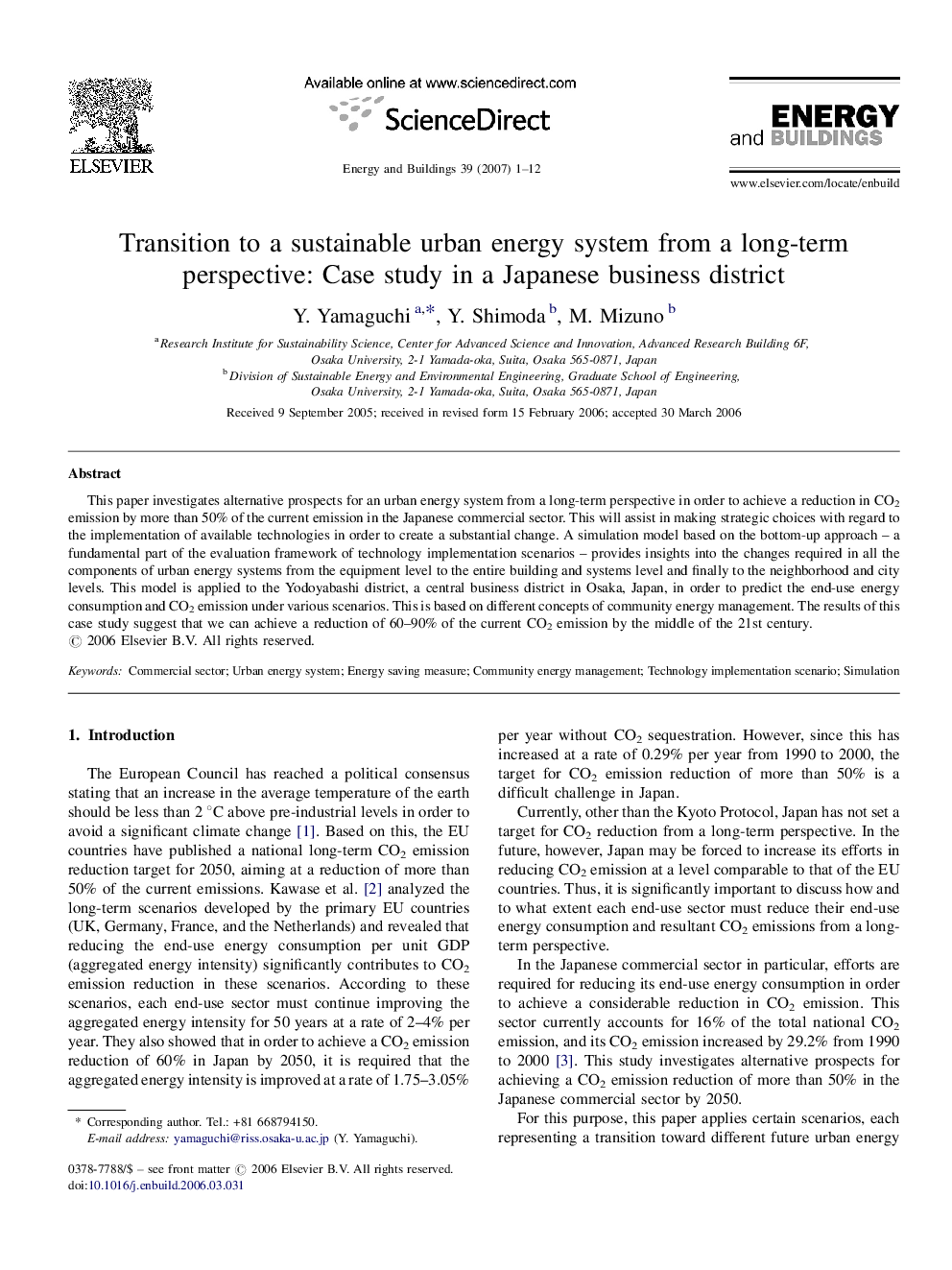| Article ID | Journal | Published Year | Pages | File Type |
|---|---|---|---|---|
| 264876 | Energy and Buildings | 2007 | 12 Pages |
This paper investigates alternative prospects for an urban energy system from a long-term perspective in order to achieve a reduction in CO2 emission by more than 50% of the current emission in the Japanese commercial sector. This will assist in making strategic choices with regard to the implementation of available technologies in order to create a substantial change. A simulation model based on the bottom-up approach – a fundamental part of the evaluation framework of technology implementation scenarios – provides insights into the changes required in all the components of urban energy systems from the equipment level to the entire building and systems level and finally to the neighborhood and city levels. This model is applied to the Yodoyabashi district, a central business district in Osaka, Japan, in order to predict the end-use energy consumption and CO2 emission under various scenarios. This is based on different concepts of community energy management. The results of this case study suggest that we can achieve a reduction of 60–90% of the current CO2 emission by the middle of the 21st century.
